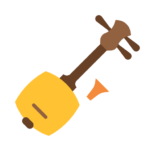The handpan has captured the hearts of musicians and sound enthusiasts alike from every part of the world due to its ethereal tones and meditation-like quality. The handpan is an instrument that helps a musician enter a life-changing dimension to be with rhythm, harmony, and one’s self. However, all these require proper guidance and a good understanding of the basics of an instrument, which one can get with structured handpan training. In this article, Navasaz covers the essentials of handpan training, shares insight into handpan tutorials, and guides a beginner through what they should expect when they start.
Handpan Training Guide
The handpan is a pretty new instrument that appeared in the early 2000s and gained immense popularity within a very short period due to its hypnotic sound. A handpan consists of two interconnected metal bowls-one plays it, tapping and slapping on the surface of a handpan with hands and fingers.

These note fields are highly adjusted to each part of the handpan for the instrument to produce resonant notes and for the player to be able to play scales and patterns; hence, this harmonious, soothing sound.
Why Consider Handpan Training
While the handpan looks deceptively easy to play, it takes time and practice to master the dynamics and sound capabilities of the instrument. Proper training on a handpan introduces the right techniques and rhythms to beginners that build skills and prevent bad habits.
This helps musicians learn hand techniques, rhythmic patterns, and note placement that allow them to express their instruments fully.
Handpan Learning Benefits
Tutorials for handpan represent one of the more standardized ways to approach the instrument. It will take a student through specific exercises, scales, and techniques that they can work on at their own pace. Most importantly, beginner tutorials lay the basic foundation and build fundamental skills for every player.
Online versus In-Person Lessons
With online platforms for handpan tutorials have become highly available. Online tutorials in high definition allow for such lessons where every technique and rhythm are broken down for a beginner. Face-to-face lessons offer immediate feedback and correction.
Both alternatives have their pros, and the choice is yours depending on your learning style, location, and time.
Common Techniques Discussed in Tutorials
Most of the handpan tutorials will include basic techniques such as the following:
The essential tapping and slapping techniques: learn how to get a clear sound by tapping with different parts of your Hand.
Rudimentary Rhythms and Patterns: start learning rhythm and creating original musical patterns.
Chord Progressions and Melodies: Practice playing simple melodies and harmonizing using various notes.

These tutorials follow the very step-by-step approach whereby the skills are incrementally developed perfect feature for beginners to make sure they can observe consistent progress.
Handpan for Beginners: First Steps
Getting started on the handpan might be a little bit overwhelming, but boy, it pays off. Here are some simple steps to think about when getting underway on this handpan journey:
Picking Your Handpan
First, one has to choose a handpan for training in the right manner. Handpans are available for a variety of scales and some of them are destined for training beginners.
Beginners do quite a bit of practice with the D minor scale because that is one of the versatile and relatively easy ones to work with. It is worth having fun learning with a good-quality instrument that returns a good sound.
Focus on Rhythm
In fact, it can also be termed that developing a good sense of rhythm is the major key in handpan training. Beginners should count and clap a rhythm before transferring it onto the instrument. Learning to play with a metronome will also improve timing and consistency.
Regular Practice
A musical instrument requires practice. As a beginner, one has got to try and practice each day, even if it is for a few minutes, as it helps in building up muscle memory and strengthening technique. Setting achievable and small goals would help to realize motivation and progress.
Common Errors in Handpan Training and How to Avoid Them
Of course, learning any new instrument does come with certain challenges, and the handpan is no exception. Following are some of the common mistakes a beginner makes and how one can avoid them, such as:
Force Overuse: The handpan is a touch-sensitive instrument. The sound may distort from hitting too hard, which might also eventually break the instrument.
Not playing the rhythm: Most beginners learn the notes and patterns, but not the rhythm of a particular song. For that reason, it sounds disjointed when played.
Not doing the basics: Basic things, such as how to position your hands or how to breathe, may be simple; these, however, actually are the roots of good technique.

Keeping those in mind, the beginner will be well on his way to developing good skills without building bad ones. We, Ali Massoudi and Padideh Ahrarnejad, conduct classes for music handpan training online or in-person, individually or in groups, at the Navasaz Academy. In addition, here at the Navasaz shop, we provide you with various high-quality Handpan instruments.
Conclusion
Handpan training can be quite a great and rewarding journey through music, rhythm, and self-expression. Many beginners will be able to learn the ropes of this practice in no time and, as such, discover how to create joy with quiet melodic sounds, provided it is approached in the right manner. So take your time and go through the handpan tutorials at hand. Dive into the beautiful world of handpan music!
FAQs
1. How much time does it take to learn the handpan?
Well, that depends on the person. Most beginning players can play simple tunes, provided they are regularly practicing, within a few weeks to months.
2. Do I have to take formal lessons to learn handpan? Not at all, though formal lessons do hasten to learn and give structure to especially the beginning player.
3. Can I learn handpan online? Yes, there are great online tutorials and lessons for a great way of learning handpan from home.
4. Which is the best handpan scale for a beginner? The general belief is that a D minor scale would be versatile and thus easy to use by beginners.
5. How do I take care of my handpan? Keep it clean: avoid touching it with dirty hands, store it in some dry place, and gently wipe it with a cloth to preserve the finish and sound quality of your instrument.
 String Instr
String Instr Percussion Instr
Percussion Instr Wind Instr
Wind Instr Keyboard Instr
Keyboard Instr Tools
Tools Books
Books

